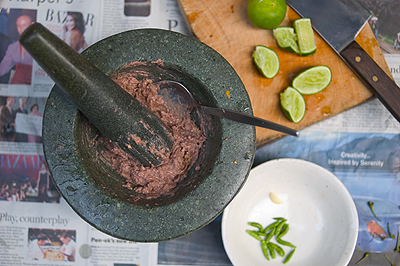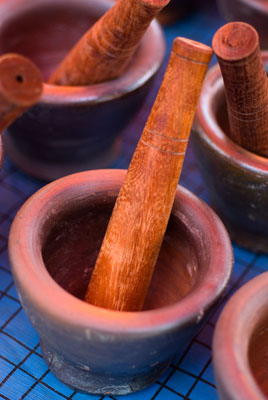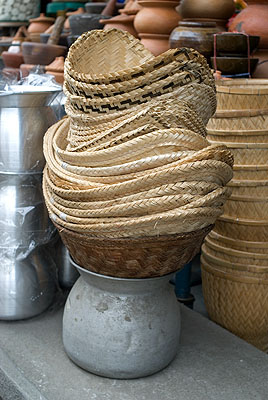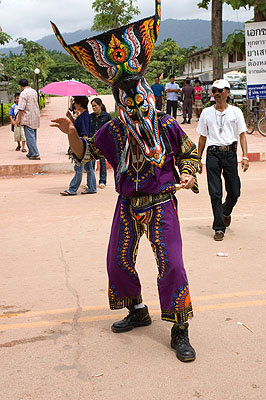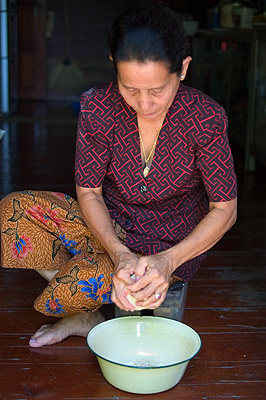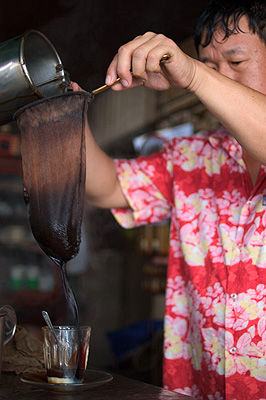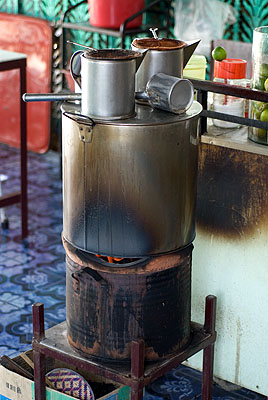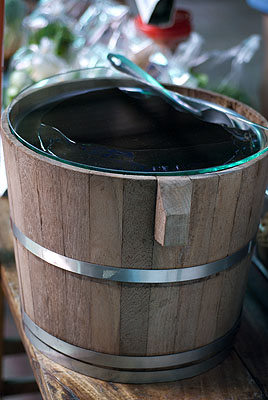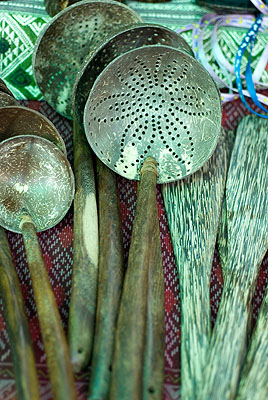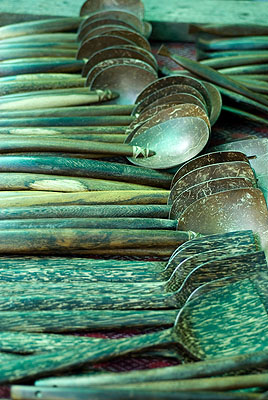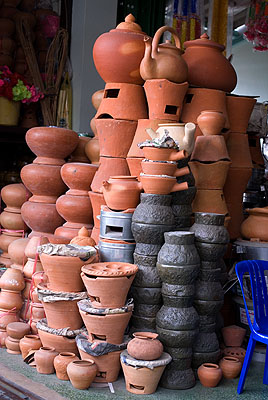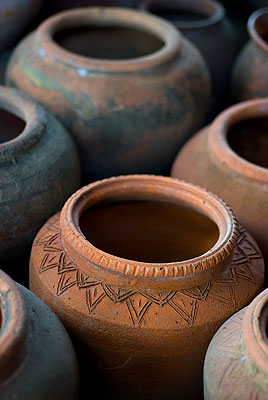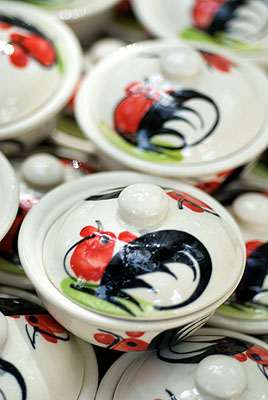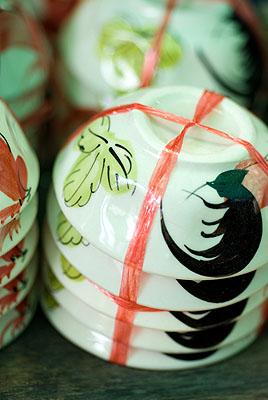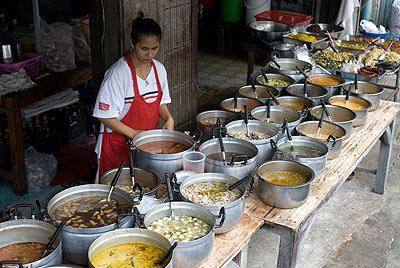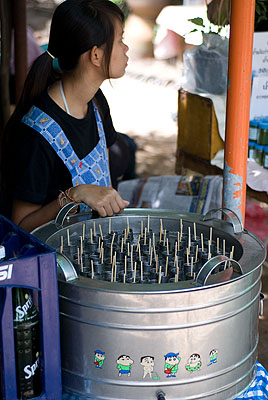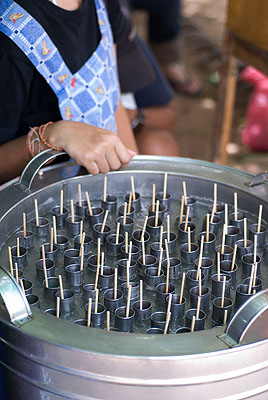I was recently contacted by a writer who asked me to share some advice on Thai kitchen utensils for a piece she is working on. I think this is a great idea for an article and reckoned I could both help her out and do a fun blog by picturing and describing a few of the tools here. This is by no means an exhaustive list; in the course of doing this blog alone I thought of heaps of other impliments/tools/appliances that I'd like to include, but it's a start, and I'll try to add to it later. If anybody out there has anything to suggest, please do comment away.
Perhaps the most important tool in the entire Thai kitchen is the mortar and pestle. Granite mortar and pestle sets are used to grind curry pastes, dried spices and chili pastes, as seen below:
Clay and wood sets are used to make som tam, papaya salad:
Speaking of which, if you're going to eat papaya salad, then you'll also need sticky rice, which in turn requires the huat, the straw basket used to steam the rice:
(As a slight aside, the huat is also used, painted and in combination with a palm tree branch, as part of the well-known masks in the Phi Ta Khon Festival in Loei, NE Thailand):
One of the most unusual tradtional Thai kitchen tools is literally translated as the "coconut milk scraping rabbit". This tool is used to scrape the meat from mature coconuts, from which coconut milk is extracted. In the past, the tool used to take the form of a large rabbit; one would sit on the rabbbit's back while using its sharp metal "teeth" to scrape the coconut. Although it's not too clear, the woman below is using a less-rabbitlike, more modern version of the tool:
My personal favorite Thai kitchen tool is the coffee sock. This is a cloth tube that serves as a primitive coffee filter:
It's probably not the best way of making coffee in the world, but is certainly unique. The coffee sock is usually found with a stainless steel pot of hot water (over a traditional charcoal stove, as seen below), a recepticle or two for the filters, and a specially designed ladle for pouring the hot water:
Wood makes its way into a few different iconic Thai kitchen utensils. Any Thai who sees the following wooden container:
will immediately be reminded of its contents: chao kuay, or grass jelly. And hard coconut shells are also used to make a variety of spoons and ladles:
Clay is another important material, and takes several different forms and serves several functions, as seen below:
Possibly the most iconic is the tho naam:
This clay pot is usually associated with northern Thailand, where it is located in fron of houses on a small roofed stand in order to provide clean drinking water for anybody passing by.
Somewhat more refined, but equally iconic are the bowls with hand-painted chicken design:
And possessing hardly any aesthetic value at all, but entirely practical and ubiquitous, are the aluminum, plastic-handled pots used for serving curries and soups:
A final interesting tool is the ice-filled basin used to make old-school Thai popcicles:
Small metal tubes are suspended in icy water from a rack that can be shaken and turned to uniformly chill their contents:
Again, there's lots more where this came from (i.e. the pin to or Thai "lunchbox", enamel colanders, the metal tray with the flower design, intimidating-looking cleavers, and katip, sticky rice containers), and I'll try to post more when I get a chance to take the pics. And Jill, it would be wonderful if you could send us by a pdf of the piece when it runs ; )












